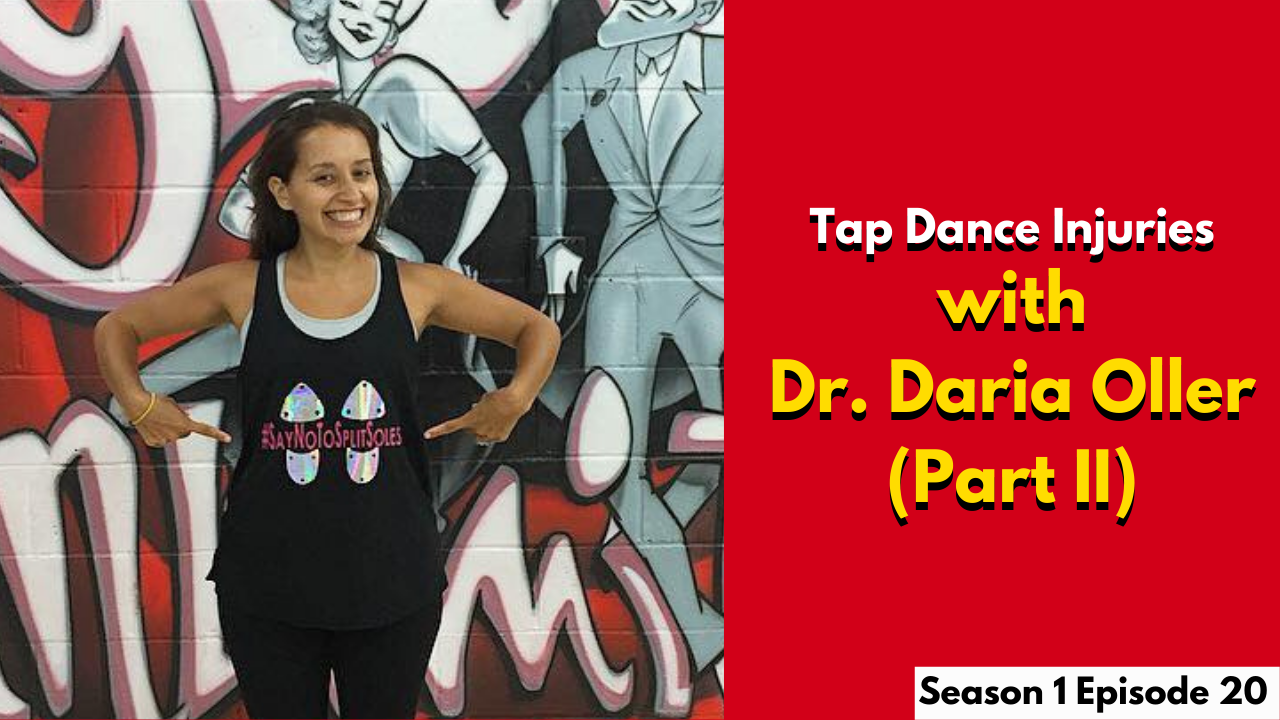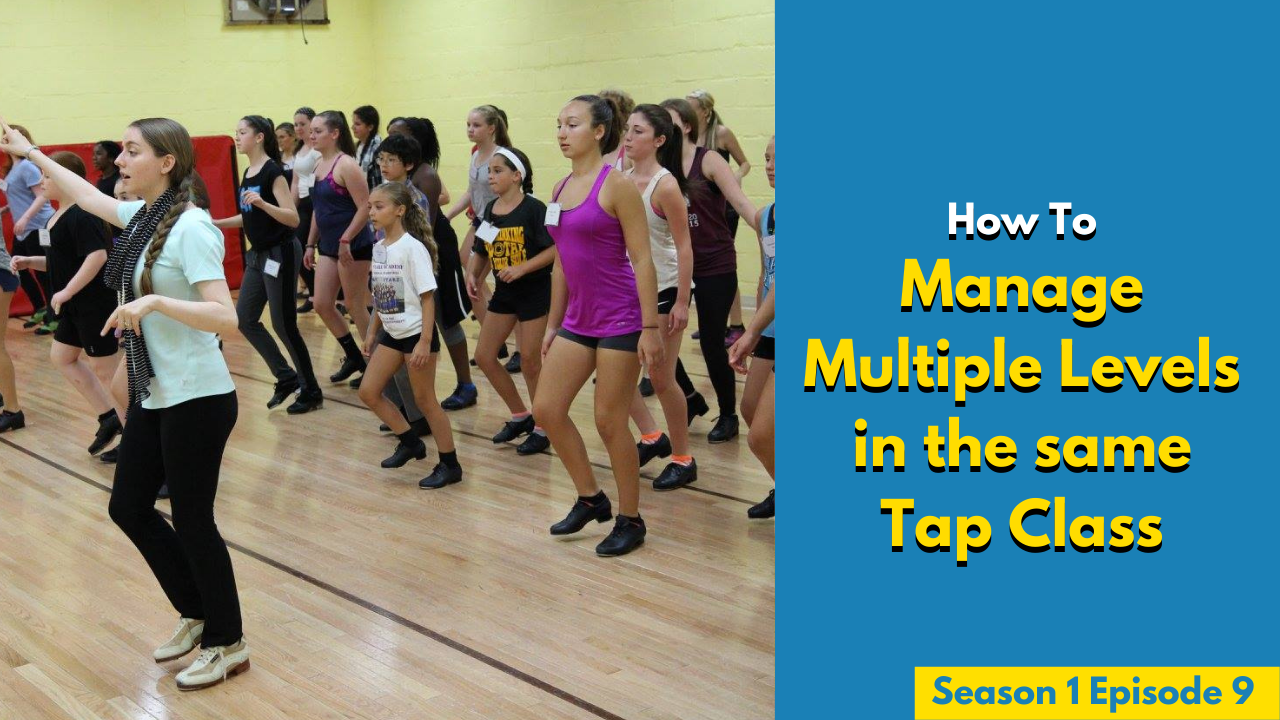Dr. Daria Oller Talks Tap Dance Injuries (Part 2)

Published on March 20th 2019 by Hillary-Marie
Today’s episode is all about tap dance injuries, and I am joined by Dr. Daria Oller, a physical therapist and athletic trainer who is also a tap dancer! Dr, Daria Oller specializes in dance medicine and youth sports medicine. She earned her Bachelor's of Science degree in Athletic Training from James Madison University in 2006. She then earned her doctorate in physical therapy from Seton Hall University in 2010. Following this, she conducted youth sports injury epidemiology research at Penn State University and she is currently a physical therapist at Foundations Physical Therapy in Washington Township in Bergen County New Jersey. She is also a tap dancer, and a performer and assistant director in the performing arts company Lady Grey's Lovelies in central Pennsylvania. Daria is also one of my students, and one of the many amazing health care professionals who have helped me work through my own personal injuries in tap dance.
HM: What is a good warm-up routine for a tap dancer?
DO: A good warm-up should physically and mentally prepare you for what you’re about to do. For example, going through steps you will be doing in class or choreography will help to get your body ready for what you are going to be doing by warming up your muscles and increasing your heart rate. A mental warm-up is just as important as a physical warm-up to get you in the right headspace.
HM: What is a good cool-down routine for a tap dancer?
DO: A good cool-down routine allows your heart rate to come down gradually. You can do this by utilizing steps you have already been doing, but not as fast or as hard. Then you can start stretching to maintain whatever level of flexibility is necessary for your movement. Tap dancers especially need to stretch their calf muscles and tibialis anterior.
HM: What about cross-training?
DO: The best way to cross-train is to do something that gets you out of the patterns your body is used to doing in tap dance. It’s important to note that you need to gradually work into these patterns if they are new for your body! Strength training is also important, especially if you feel an area of weakness. The ability to do something else is also good for mental health.
HM: What does rest look like for a professional tap dancer or teacher?
DO: Physical rest is hard for tap dancers but your body needs rest to recover. When you exercise, you are ultimately breaking down muscle and bone and then they rebuild even stronger. Injuries (stress fractures) happen when bones and muscles are breaking down more quickly than your body can replace the broken down cells. Active rest is important and similar to cross-training. It keeps you moving on your “off days,” but in a different pattern, for example, going for a walk.
HM: What about preventative body maintenance?
DO: It’s important to recognize if you have any limitations within your own body that you need to work with. Physical therapist/athletic trainers can help you develop a plan to strengthen/stretch to work with these limitations. Rest is also important as lack of rest can lead to injuries due to overuse. You need to find what works for you because some people like acupuncture and massage, others prefer working with physical therapists and trainers, but it is important to find those medical professionals who are reputable and can actually help find areas of weakness and give you ways to work on them.
HM: What should a dancer do post-injury?
DO: Hopefully, they recognize that there is an injury and seek the appropriate medical care. Dancers can see a Physical Therapist, Primary Care Physician, or Orthopedic Doctor (depending on the state and your insurance). Search for healthcare practitioners who are going to help you get back to what you want to do, and can help work on other aspects of fitness to get you back as soon as possible.
HM: What does a Physical Therapy session look like?
DO: At your initial evaluation, you will give a background of your injury/issue as well as life routines, what you can or can’t do, what your challenges are. You will be measured to gauge where you are right now, and then a plan is developed to try to help you with your impairments or dysfunctions. Physical therapists are constantly re-assessing and revamping the program to get you back to dance as quickly as possible. A big part of PT is the home exercise program where you are given things to work on at home, outside of the PT office.
HM: What is the difference between a Sports Specific Therapist and a General Medical Professional?
DO: Physicians are training to be specialized in whatever aspect of health they focus on. Those who train to be Sports Medical professionals often seek extra certifications and training that allows them to better understand the bodies and paths of those who understand the bodies of those who specialize in movement.
HM: Is it possible to go completely injury free?
DO: Accidents do happen and there are sometimes unforeseen circumstances. If you stay on top of the little discomforts and irritants, you will know when it reaches a point that you need to seek help. Think ahead, how can you take care of your body so that you can dance long-term?
It’s beautiful that the tap dance community is full of tap dancers who have expertise in other fields! You can reach Dr. Daria Olller on Twitter @dariamarie_o
Comment below or post in the iTapOnline™ Community Facebook group. Please comment and share your thoughts. I always write you back!
Subscribe
Click here to subscribe to the podcast and visit www.iTapOnline.com for more content, including blog posts, tap dance tutorials, my free rhythm training for tap dancers video series and much more. If you subscribe to the mailing list you’ll get updates and free gifts, and if you become an iTapOnline™ Member, you’ll be joining a community of passionate tap dancers and tap teachers who have full-time access to my exclusive online content including over 100 tap dance tutorial videos!

